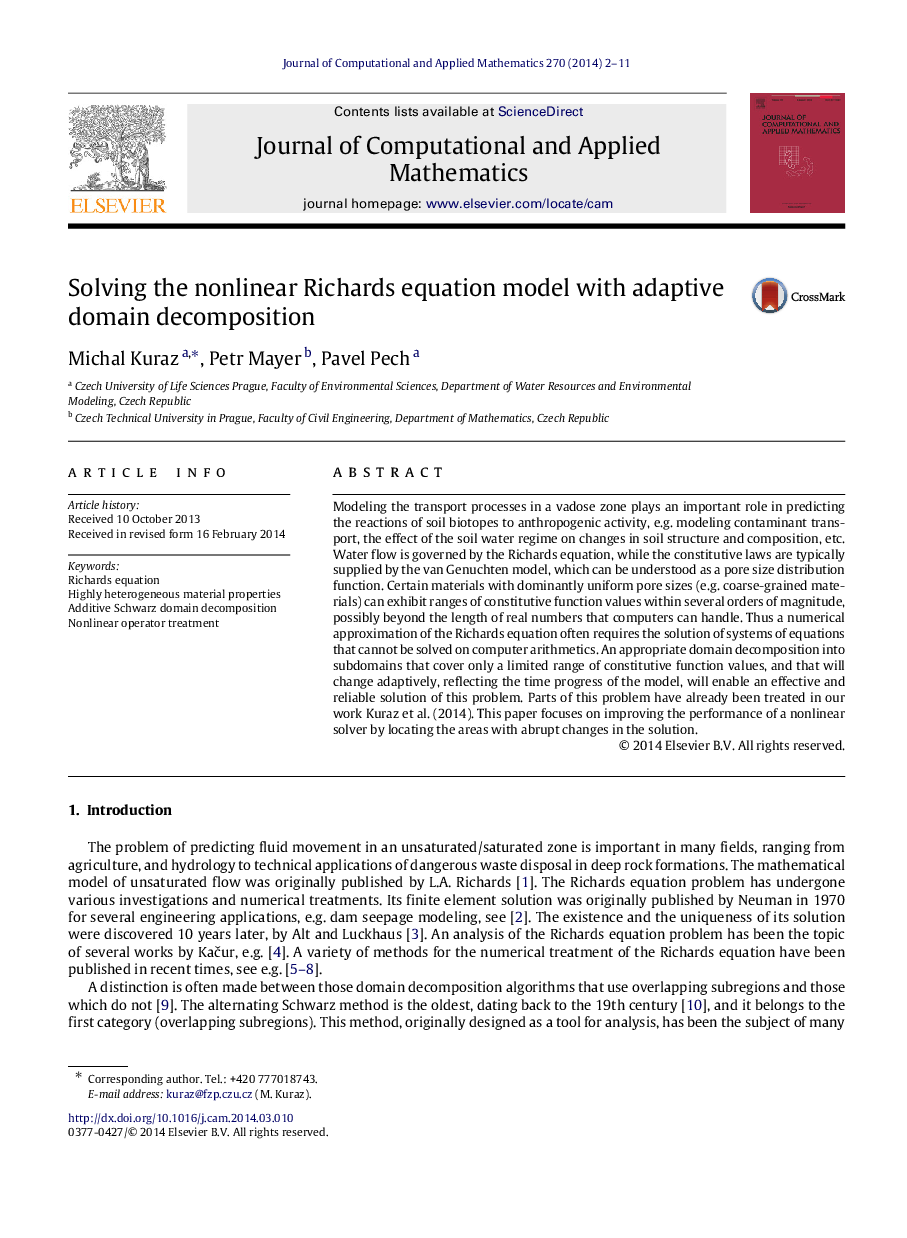| Article ID | Journal | Published Year | Pages | File Type |
|---|---|---|---|---|
| 4638718 | Journal of Computational and Applied Mathematics | 2014 | 10 Pages |
Modeling the transport processes in a vadose zone plays an important role in predicting the reactions of soil biotopes to anthropogenic activity, e.g. modeling contaminant transport, the effect of the soil water regime on changes in soil structure and composition, etc. Water flow is governed by the Richards equation, while the constitutive laws are typically supplied by the van Genuchten model, which can be understood as a pore size distribution function. Certain materials with dominantly uniform pore sizes (e.g. coarse-grained materials) can exhibit ranges of constitutive function values within several orders of magnitude, possibly beyond the length of real numbers that computers can handle. Thus a numerical approximation of the Richards equation often requires the solution of systems of equations that cannot be solved on computer arithmetics. An appropriate domain decomposition into subdomains that cover only a limited range of constitutive function values, and that will change adaptively, reflecting the time progress of the model, will enable an effective and reliable solution of this problem. Parts of this problem have already been treated in our work Kuraz et al. (2014). This paper focuses on improving the performance of a nonlinear solver by locating the areas with abrupt changes in the solution.
